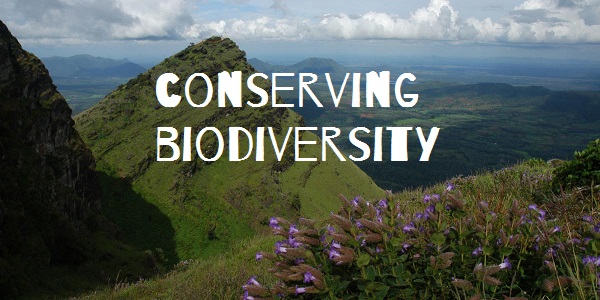Conserving Biodiversity- From Agreement to Action

From Current Affairs Notes for UPSC » Editorials & In-depths » This topic
IAS EXPRESS Vs UPSC Prelims 2024: 85+ questions reflected
The recent observation of International Biodiversity Day in May is yet another reminder of the crucial role of biodiversity in ensuring our future existence. The 2023 Biodiversity Day’s theme “From Agreement to Action: Build Back Biodiversity” signifies the pressing need to start taking concrete action.

Background:
- Biodiversity encompasses several things:
- Diversity of life forms
- Genetic variation within species
- Diversity in ecosystems- forests, wetlands, lakes, rivers, deserts, etc.
- Even the intricate pattern created by these life forms
- The International Day for Biological Diversity is observed on May 22nd every year.
- It marks the adoption of the UN Convention on Biological Diversity at the Earth Summit, in Rio de Janeiro, Brazil in 1992.
- The theme for 2023 is “From Agreement to Action: Build Back Biodiversity.”
Why should we conserve biodiversity?
- Preserving and enhancing biodiversity is possibly the least expensive way to sequester carbon and slow down climate change.
- It is vital for ensuring our food security and general well-being. For instance, nature based solutions (NbS) are important for sustaining our agriculture, even in the face of rapid climate change.
- It is key to restoring degraded lands and polluted water bodies.
- Biodiversity delivers crucial ecosystem services like nutrient recycling, pollination, water purification, etc.
- It also has significance for our:
- Economy
- Culture
- Mental health, etc.
What are the shortcomings in our current approach?
- Currently, the Indian Forest Service is the main custodian of biodiversity in India. however, the focus is limited to ‘forests’, while the Indian biodiversity is replete with variety like water bodies, rivers, deltas, ocean, grasslands, deserts, etc.
- The larger public has been aware of the interconnectedness among the various ecosystems and workings of ecosystem services in multifunctional landscapes since the 20th century itself. Hence, in the 21st century, limiting terms like ‘forests’ and ‘wildlife’ are insufficient to address the conservation needs.
- While the 2006 Forest Rights Act calls for increasing the indigenous groups’ stakes in ownership and management of biodiversity, the provisions have largely remained only on paper.
- Currently, the conservation efforts are dominated by a top-down approach which is one of the reasons behind the limited success.
- Insufficient valuation of biodiversity in India’s rapid pursuit of economic development. for instance, the recent Forest (Conservation) Amendment Bill is being criticized for this reason.
What is the way ahead?
- Despite the widespread awareness of the importance of biodiversity, we have remained poor stewards in conserving and managing this precious and irreplaceable natural heritage.
- The rapid pace of biodiversity decline calls for translation of agreements and in-paper plans to concrete action.
- There is an urgent need to implement the provisions of the 2006 Act. It has been 17 years since its enactment and the tribes are still denied the benefits.
- The civil society must take a proactive role in sustaining the Indian biodiversity.
- Given how biodiversity is everywhere, conservation efforts must be accordingly mainstreamed into everyday actions- covering every development program, government department and institutions- both public and private.
- Decentralization of efforts is vital. It is necessary to change our perception to ‘multifunctional landscapes’ with the local communities’ aspirations, traditional knowledge, belief system and participation taking a more central role in biodiversity conservation.
- National Mission on Biodiversity and Human Wellbeing:
- This is a proposed Mission put forth by the Biodiversity Collaborative, Bengaluru. It has received in-principle approval from the Prime Minister’s Science, Technology, and Innovation Council.
- This Mission envisages people at the center of conservation and sustainable use efforts.
- It seeks to embed consideration of biodiversity in the various development programs.
- It seeks to instil curiosity and a sense of responsibility about biodiversity among the children and students.
Conclusion:
Biodiversity is a provider of numerous ecological services and has a crucial role in our efforts to curb climate change. Hence, a healthy biodiversity is key to a health humanity. While India has been taking efforts to conserve its rich biodiversity, the top-down approach is not yielding results. The situation calls for a decentralized approach that reflects an understanding of the real significance of losing our precious biodiversity.
Practice Question for Mains:
What are the shortcomings in India’s approach to biodiversity conservation? Suggest some solutions. (250 words)
If you like this post, please share your feedback in the comments section below so that we will upload more posts like this.

